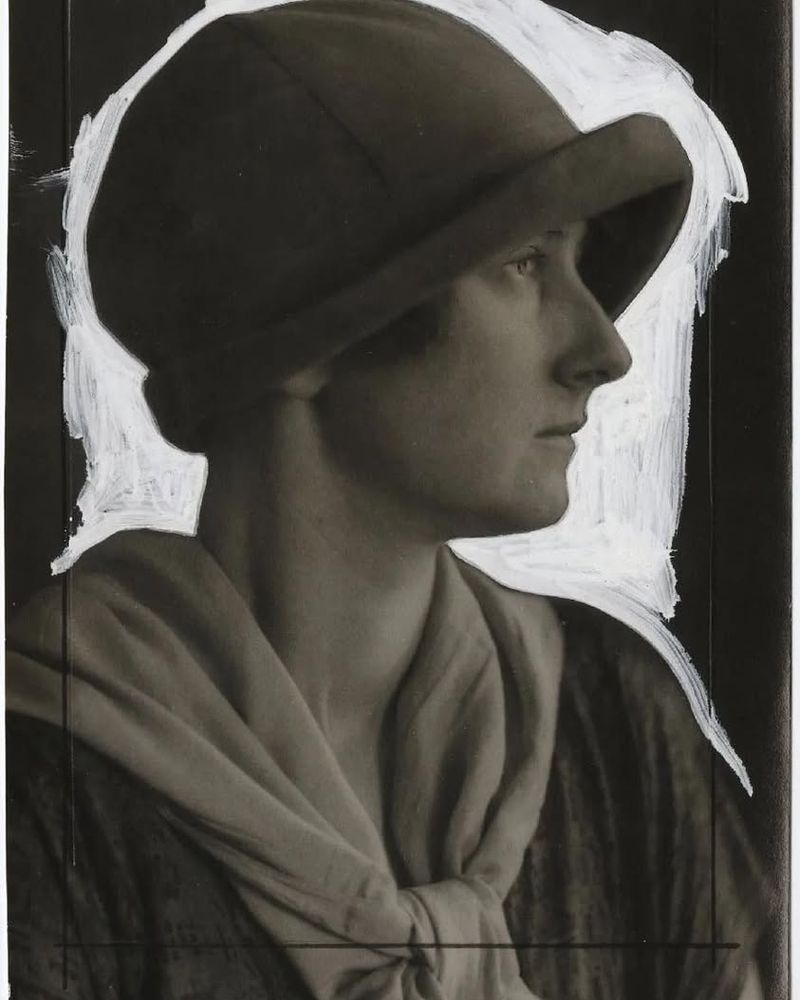Ragnhild Keyser
Ragnhild Keyser was a Norwegian visual artist and abstract painter, principally active during the 1920s. Born in Oslo, she first studied (1909 - 1910) under Harriet Backer (1845 – 1932, Norwegian painter who achieved recognition in her own time and was a pioneer among female artists both in the Nordic countries and in Europe generally. She is best known for her detailed interior scenes, communicated with rich colors and the interplay of light and shadow) and later (1916 - 1919) with Pola Gauguin (1883 – 1961, Danish-Norwegian painter, art critic and biographer. Born in Paris, France, he was the youngest of five children born to the famed French artist Paul Gauguin and his Danish wife Mette Sophie Gad).
Keyser moved to Paris in 1920 and performed her most important works there during the years 1925 – 1927. She was a student of Roger Bissière (1886 - 1964, French visual artist and teacher who designed stained glass windows for Metz cathedral and several other churches; as well as painted, and collaged textiles) and André Lhote (1885 - 1962, FrenchCubist painter of figure subjects, portraits, landscapes, and still life. He was also active and influential as a teacher and writer on art) at Académie Ranson in the early 1920s, Pedro Araujo at Académie Araujo (1922 – 1923) and Fernand Léger (1881 - 1955, French painter, sculptor and filmmaker who, in his early works, created a personal form of cubism (known as ‘tubism’) which he gradually modified into a more figurative style. His boldly simplified treatment of modern subject matter has caused him to be regarded as a forerunner of pop art) at Académie Moderne (1924 – 1926). She became inspired by Cubism, mainly by the works of André Lhote and Fernand Léger.
Keyser participated in several exhibitions in the 1920s, including Salon des Indépendants (1923 and 1926), L’Art d’Aujourd’hui (1925) and Académie Moderne’s exhibitions in Paris (1926 and 1927). She also exhibited at the International Exhibition of Modern Art at the Brooklyn Museum in New York City (1926 – 1927). During this time three of her finest works, now in the Yale University Art Gallery, New Haven, Connecticut, U.S.A., Composition I (1926, oil on canvas, 129.5 x 65.1 cm), Composition II (1926, oil on canvas, 81.3 x 30.5 cm) and Composition III (1926, oil on canvas, 81.3 x 40 cm) were purchased by the American art collector Katherine Dreier (1877 - 1952).
Artist and collector Katherine Dreier joined Marcel Duchamp (1887 – 1968, French painter, sculptor and writer whose work is associated with Cubism, Dada, Futurism and conceptual art) and Man Ray (1890 – 1976, American naturalized French visual artist who spent most of his career in Paris. He was a significant contributor to the Dada and Surrealist movements, although his ties to each were informal. He produced major works in a variety of media but considered himself a painter above all) to found the Société Anonyme, an organization designed to support and generate awareness of modernist art; the group’s name, a French phrase meaning ‘incorporated,’ highlighted the fact that the organization was not allied with any particular artistic school. The Société Anonyme promoted new artists by arranging exhibitions to introduce audiences to their work and develop their reputations among galleries and collectors. Critics praised the Société Anonyme for its commitment to new artists and its inclusion of their work in exhibits and catalogs. Dreier played an essential role in generating American interest in and acceptance of modern art. She ran the Société Anonyme’s small gallery, curated exhibitions, and wrote essays and gave lectures in support of modern art. Dreier was also an accomplished painter — two of her paintings hung in the legendary Armory Show of 1913.
Keyser also participated in the exhibition 8 Scandinavian Cubists at the Norwegian Society of Artists in 1927, but after settling permanently in Norway, she abandoned this advanced form of painting in favour of a more naturalistic style. Her exhibition at Blomqvists Kunsthandel, Oslo, in 1932 consisted mainly of landscapes, and to some extent revealed the difficulties she had had in finding a new basis for her art.
Keyser, during her later years, often painted together with her friend Ragnhild Kaarbø (1889 – 1949, Norwegian painter. Influenced by Fauvism, she painted expressionistic portraits. She was also influenced by Cubism, but as her cubistic paintings were criticized by the press, she eventually focused on impressionistic landscape paintings), and like her was a student of Georg Jacobsen (1887 – 1976, Danish painter who studied under Viggo Johansen at the Royal Danish Academy of Fine Arts in Copenhagen 1906 - 1911. He later spent time in Paris, 1919 - 1935, as well as Italy and Spain. 1935 - 1940 he worked at the Norwegian National Academy of Fine Arts) in 1935 - 1936.
Her painting Armour (1926, 109.5 x 50 cm) is in the collection of the National Museum of Art, Architecture and Design in Oslo.
In accordance with Keyser’s wishes, a travel fund was established after her death for the education of younger artists.
